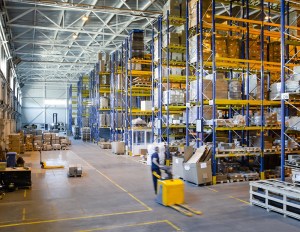Industrial Sector Fundamentals Remain Solid
Despite a slowdown in demand and investment activity, the industrial segment maintains its strong performance, according to the latest CommercialEdge report.
While the commercial real estate sector is witnessing negative trends, the industrial segment continues to power through with increasing asking rents and low vacancy rates. Although industrial demand stayed elevated during and after the pandemic, CommercialEdge expects it to moderate in the near future, especially as interest rate increases may impact pricing and loan refinancing.
Nearly 14 percent of loans on industrial properties nationally will mature over the next three years. That includes some 20 percent of the stock in Atlanta, Kansas City, Miss., Phoenix and Memphis, Tenn., and more than 15 percent of the stock in the Inland Empire and the Bay Area. In contrast to other commercial real estate segments, the fundamentals of the industrial sector remain solid, with high demand among lenders and investors alike.
READ ALSO: What’s Constraining CRE Lenders?
Transaction activity cooled off this year, with industrial sales in the first quarter of 2023 amounting to $7.7 billion, CommercialEdge data shows. Despite a lag in collecting sales data, investment volume was still much lower than the $20.5 billion completed in the same period last year. It was also the lowest first-quarter volume since 2016, when industrial sales totaled $5.9 billion.
National in-place rents for industrial space averaged $7.15 per square foot in March, up 710 basis points year-over-year and 14 cents more when compared to the beginning of the year. Of the top 30 markets covered by CommercialEdge, 18 recorded a year-over-year increase of 5.2 percent and above. Average in-place rents grew exponentially in large coastal markets, with the Inland Empire (16.3 percent year-over-year), Los Angeles (13.1 percent), Boston (9.7 percent) and New Jersey (8.6 percent) leading the way in this sense.
Meanwhile, national industrial vacancy remained unchanged from last month, standing at 3.9 percent. Despite fluctuations in leasing and an influx of new supply, occupancy rates remain strong. The lowest vacancies were found in the Midwest and West, including Columbus (1.2 percent), the Inland Empire (1.7 percent), Phoenix (2.0 percent), Los Angeles (2.3 percent) and Indianapolis (2.4 percent).
Additional strain on shrinking pipeline
The under-construction pipeline continued to diminish and featured 636.6 million square feet of industrial space at the end of March, or 3.5 percent of total stock, CommercialEdge data shows. Another 127 million square feet was delivered during the first three months of 2023. Projects are taking longer to complete and commercial banks are tightening their lending standards for constructon loans, making financing less available.
The largest pipeline on a percentage of stock basis in the country was found in Phoenix (15.7 percent, 54.3 million square feet underway). In Dallas-Fort Worth, nearly 60 million square feet of space was under construction, accounting for 6.8 percent of total stock, followed closely by Denver (5.1 percent, 12.8 million square feet).
Read the full CommercialEdge report.








You must be logged in to post a comment.